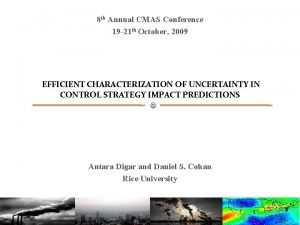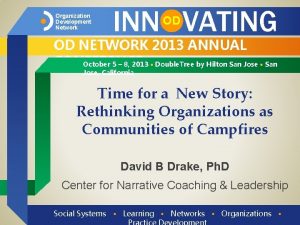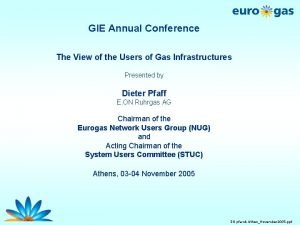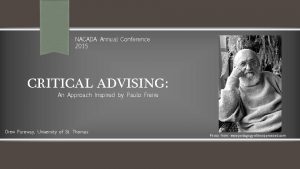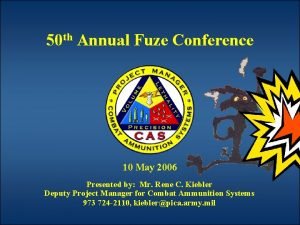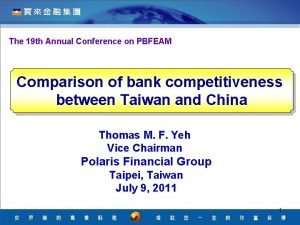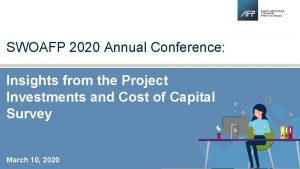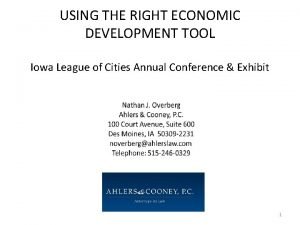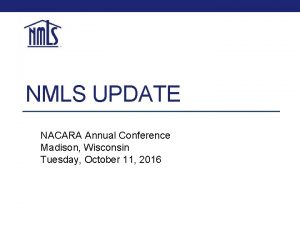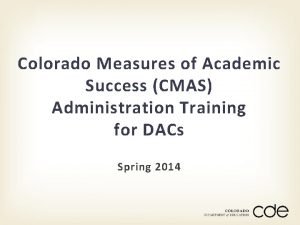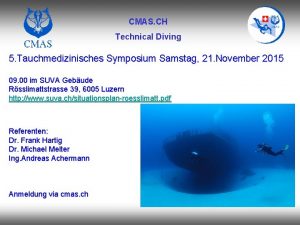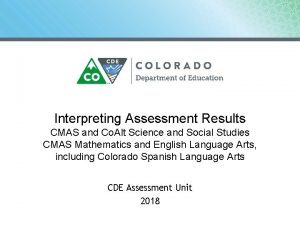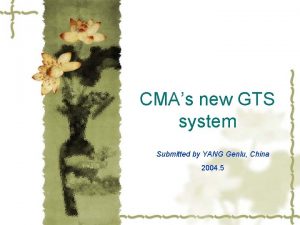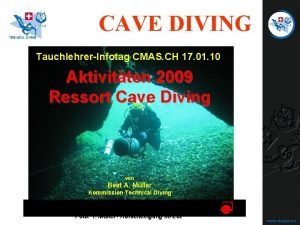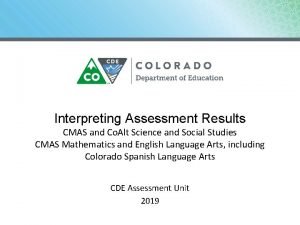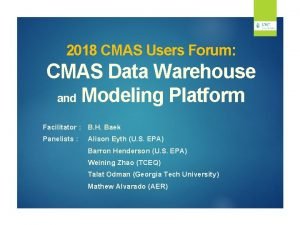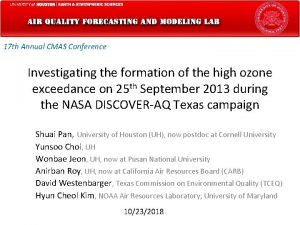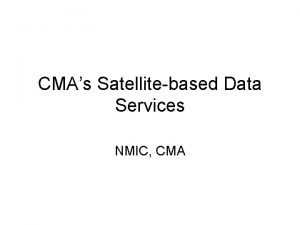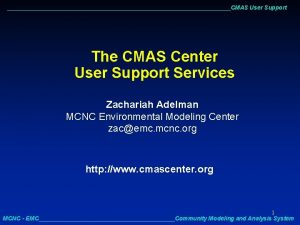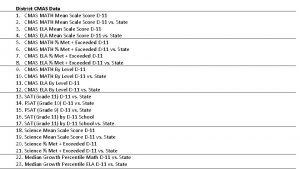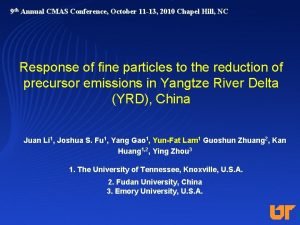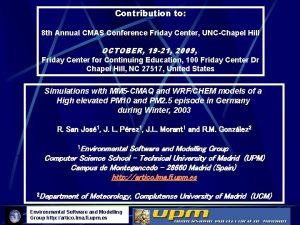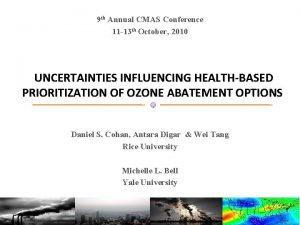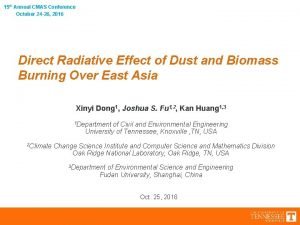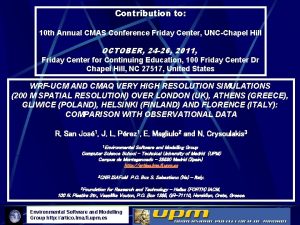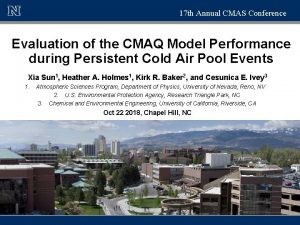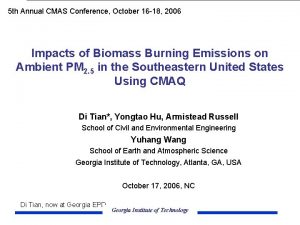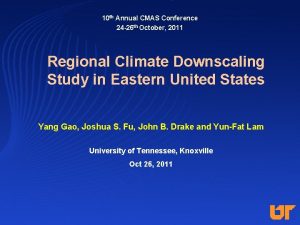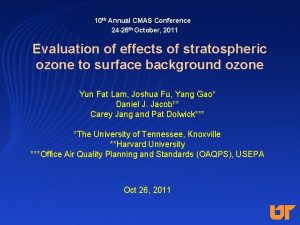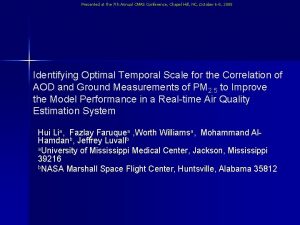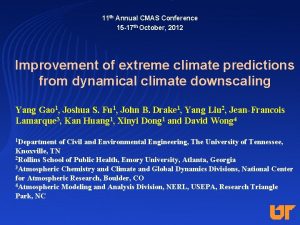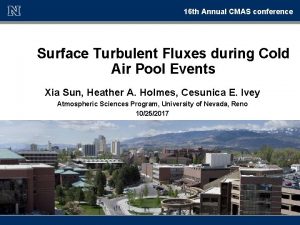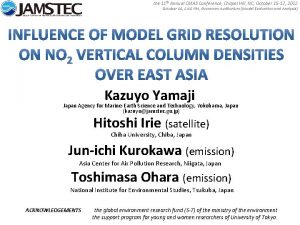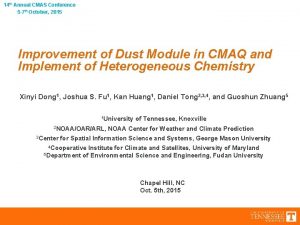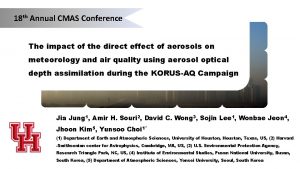17 th Annual CMAS Conference Investigating the formation
























- Slides: 24

17 th Annual CMAS Conference Investigating the formation of the high ozone exceedance on 25 th September 2013 during the NASA DISCOVER-AQ Texas campaign Shuai Pan, University of Houston (UH), now postdoc at Cornell University Yunsoo Choi, UH Wonbae Jeon, UH, now at Pusan National University Anirban Roy, UH, now at California Air Resources Board (CARB) David Westenbarger, Texas Commission on Environmental Quality (TCEQ) Hyun Cheol Kim, NOAA Air Resources Laboratory; University of Maryland 10/23/2018

O 3 time series of the month of Sept. 2013 urban site High O 3 episode industrial/coastal site

O 3 obs-model discrepancy in the afternoon of 09/25 Ship channel industrial area Zoom-in at industrial and bay areas petrochemical and chemical manufacturing facilities 11 am - 5 pm Air. Now vs CMAQ P 3 B vs CMAQ 1 -3 pm 2 pm

Possible causes of the high O 3

Meteorological conditions favoring O 3 production frontal passage sunny dry weak wind • High O 3 caused by postfrontal conditions (Rappenglück et al. , 2008; Ngan and Byun, 2011)

HRVOCs’ amount • 12 CST unexpected episodic flare emissions (Murphy and Allen 2005; Vizuete et al. 2008) emission upset?

exceptional high obs. NOx and local wind At early morning time, OBS: calm or very weak westerly Model: weak northerly, or northwesterly

Wind reversal and converging zone 09 -> 10 CST • • Wind reversal at west coastline of Galveston Bay transported back the pollutants which were previously blown into the bay. After that, a wind converging zone formed at Ship Channel, and lasted for several hours.

Possible causes of the high O 3 • Causes of the high O 3 on 25 September 2013 possible episodic flare emissions, dry sunny postfrontal conditions, calm or light wind, nocturnal shallow boundary layer, land-bay/sea breeze transition, wind reversal. • Reasons of model insufficient performance Discrepancy in local wind patterns and precursors’ conditions

Emission and wind adjustment and sensitivity simulations

Adjusted conceptual wind fields Adjusted wind 1 00 - 07 CST 3 layers, ~160 m ratiohr = ave(sim)/ave(obs) UWIND_adj = 1/ratio*abs(VWIND) VWIND_adj = -1/ratio*abs(UWIND) weak westerly

Adjusted conceptual wind fields Adjusted wind 2 09 - 16 CST 17 layers, ~2000 m Same converging wind for each hour

4 Simulation Cases • SENS: SST (updating WRF with hourly NOAA GOES SST) • SENS-EMIS: SST+ unexpected NOx and VOC emissions • SENS-WIND: SST + wind fields adjustments • SENS-TOT: (2)+(3)

NOx at 05 CST increase at grid cells SENS-EMIS SENS-WIND SENS-TOT domain-wide increase

O 3 at 14 CST SENS-EMIS SENS-WIND SENS-TOT

NOx and O 3

O 3 at other sites

P 3 B vs CMAQ

Summary • Causes of the high O 3 on 25 September 2013 possible episodic flare emissions, dry sunny postfrontal conditions, calm or light wind, nocturnal shallow boundary layer, land-bay/sea breeze transition, wind reversal. • With “better” emission and wind, model predictions can become more accurate (amount, location, timing). Suggestions • Improving model’s capability to reproduce small scale meteorological conditions favoring O 3 production, such as stagnation and wind reversals, is needed. • Land-sea/bay circulation patterns may last for long time. • Need better industry emissions management, clean transportation.

Thank you! Questions? • Further questions can be sent to: sp 694@cornell. edu or shuaipan 87@qq. com

Observed wind during flight taking off and landing 0 -1000 m at 7 CST and 10 CST weak westerly 0 -2000 m at 13 CST and 16 CST roughly converging NOAA MADIS Aircraft Communications Addressing and Reporting System (ACARS)

PBL (Haman et al. , 2012; 2014) On high ozone days, PBL heights are consistently lower during nighttime/morning; observed PBL growth rates are lower during early morning UH A rapid increase (>1000 m) at noon 06 CST nocturnal shallow boundary layer 14 CST

09/24 16 CST 1 -day backward trajectory using MCIP 10 -m wind Dominate flow patterns 09/25 16 CST

Impact of biomass burning Base: baseline emission BB: Base + fire emission
 Cmas conference
Cmas conference Travel health insurance association annual conference
Travel health insurance association annual conference Od network
Od network Stfm annual spring conference
Stfm annual spring conference Gie annual conference
Gie annual conference Gcyf 2011 annual conference
Gcyf 2011 annual conference Nacada annual conference
Nacada annual conference Stfm annual conference
Stfm annual conference Fuze conference 2018
Fuze conference 2018 2017 dvhimss annual fall conference
2017 dvhimss annual fall conference Hepi annual conference
Hepi annual conference Pbfeam
Pbfeam Afp annual conference 2020
Afp annual conference 2020 Iowa league of cities annual conference
Iowa league of cities annual conference Nmls conference
Nmls conference Test nav colorado
Test nav colorado Cmas
Cmas Cmas test nav
Cmas test nav Cmas ch
Cmas ch Morale scale
Morale scale Mfc cmas
Mfc cmas Cmas.ch
Cmas.ch Cmas score interpretation
Cmas score interpretation What is com.lge.cmas
What is com.lge.cmas Cmas forum
Cmas forum
